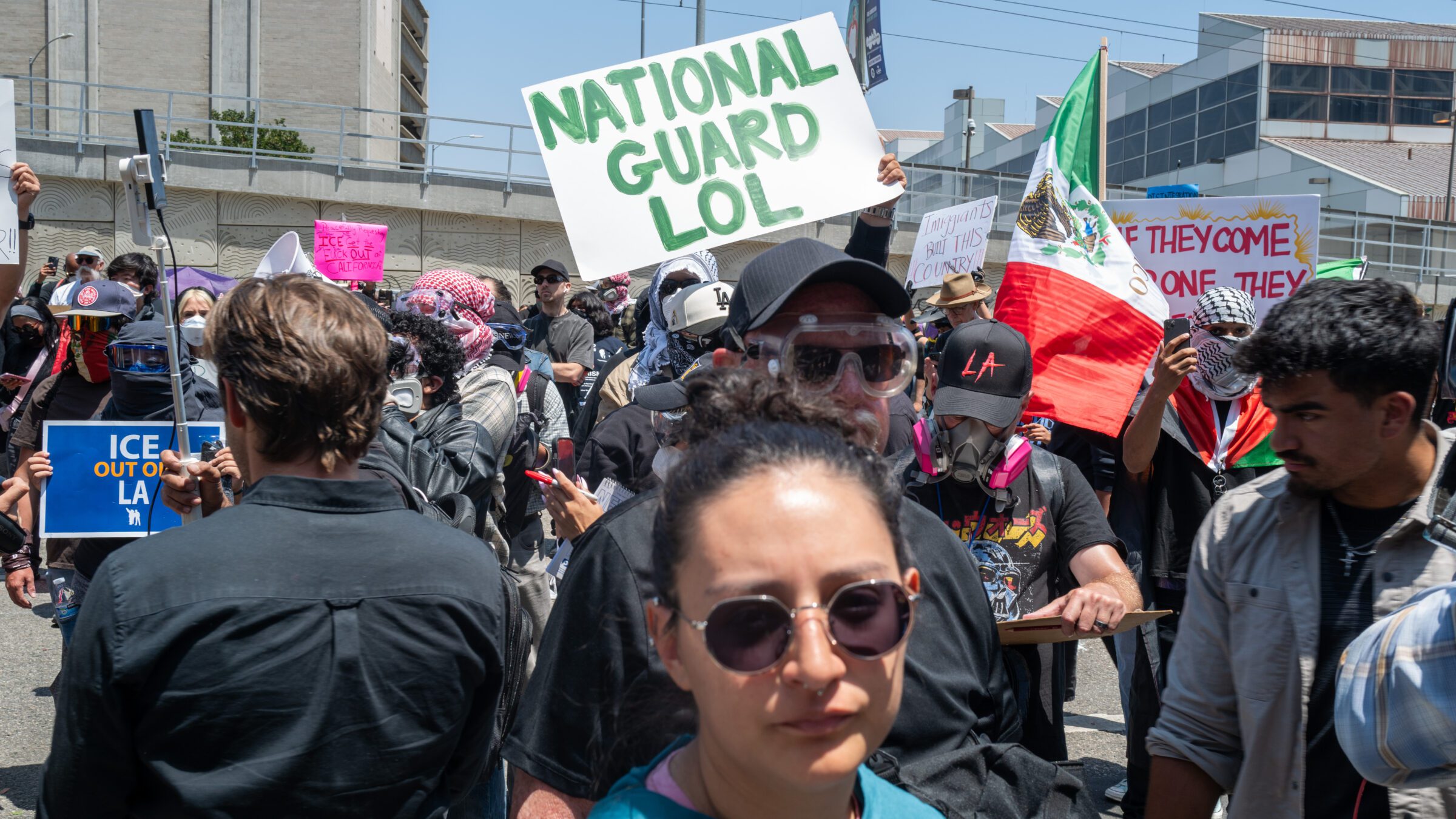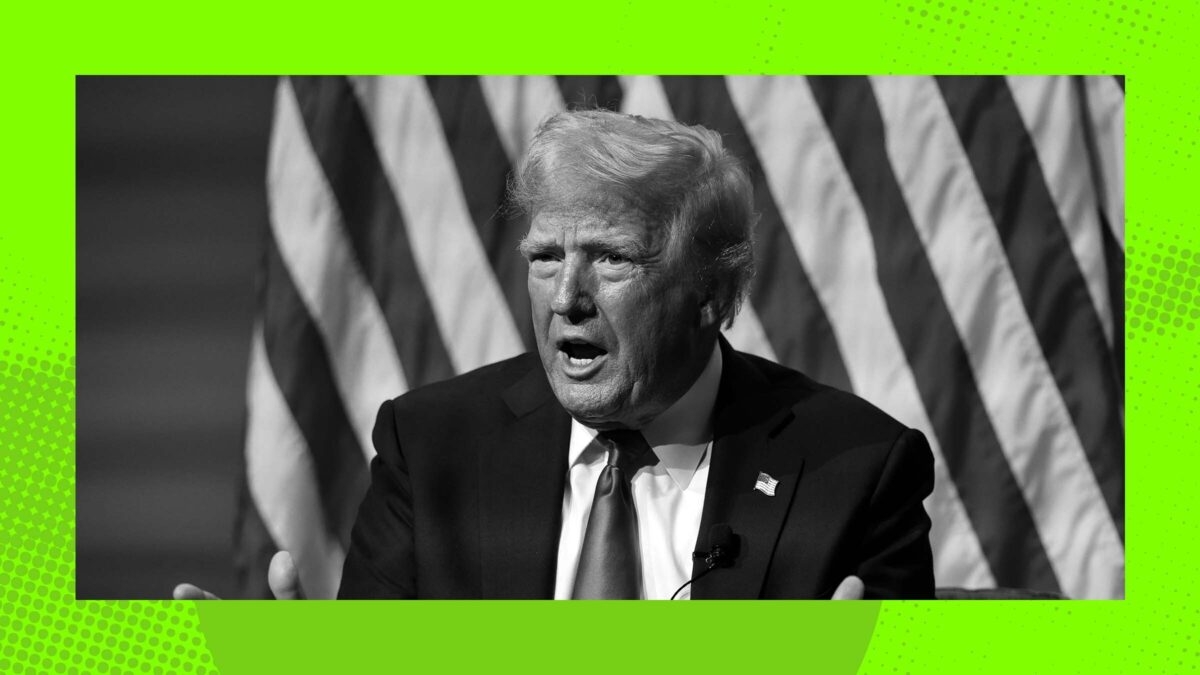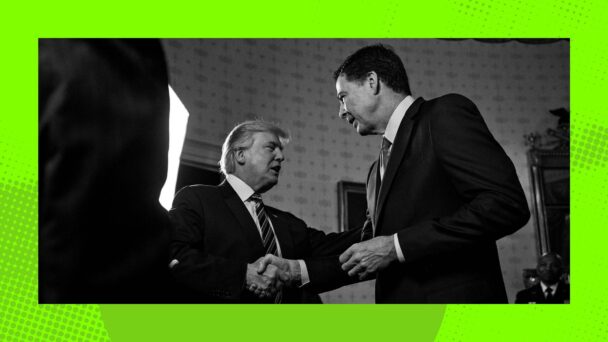On Friday, following multiple raids by Immigration and Customs Enforcement, Los Angeles residents took to the streets to protest the abduction and removal of their neighbors from the country. President Donald Trump responded on Saturday by issuing a memorandum that deputizes “at least 2,000 National Guard personnel” to “temporarily protect” ICE agents and ICE property while the raids continue. As of Monday, there were approximately 1,700 National Guard soldiers under federal command in the greater Los Angeles area, and Defense Secretary Pete Hegseth ordered an additional 2,000 California National Guard members into federal service later that day.
Trump’s memo also instructed Hegseth to employ the regular armed forces “as necessary to augment and support the protection of Federal functions and property.” On Monday, the administration followed through, deploying 700 Marines to “integrate” with National Guard troops already on the ground in California.
As justification, the memo points to 10 U.S.C. 12406, a federal statute that allows presidents to federalize the National Guard in the event of an “invasion by a foreign nation,” a “rebellion against the authority of the Government of the United States,” or if “the President is unable with the regular forces to execute the laws of the United States.” On Monday morning, California leaders announced that they would sue the Trump administration for its takeover of the state’s national guard, in part because these statutorily-required circumstances simply don’t exist.
“Let me be clear: There is no invasion. There is no rebellion,” said California Attorney General Rob Bonta. “The President is trying to manufacture chaos and crisis on the ground for his own political ends.” As California puts it in its complaint, “primarily peaceful protests with some acts of violence or civil disobedience do not rise to the level of a rebellion.”

(Photo by Spencer Platt/Getty Images)
Trump’s memo says that “to the extent that protests or acts of violence directly inhibit the execution of the laws, they constitute a form of rebellion against the authority of the Government of the United States.” Black’s Law Dictionary says otherwise: “Rebellion” generally means “an organized attempt to change the government or leader of a country, usually through violence.” Although the Supreme Court hasn’t had occasion to specifically define the word “rebellion,” it has frequently used the term in reference to Southern states’ secession. And the Fourteenth Amendment, adopted in the wake of the Civil War and aimed in part at preventing the Confederacy from regaining power, prohibits elected officials who “engaged in insurrection or rebellion” from holding office again. This all suggests that “rebellion” is more akin to warfare than a few dozen people outside a Home Depot, which was the extent of the purported rebellion at the time Trump issued his memorandum.
The administration’s actions also implicate the Posse Comitatus Act of 1878, which prohibits the use of the military for civilian law enforcement unless expressly authorized by the Constitution or an act of Congress. And again, Trump’s memo did not cite a plausible legal exception: Although Section 12406 lets a president call the National Guard into service, it does not include any substantive grant of power. There’s a hair-splitting argument that Trump has not violated the Posse Comitatus Act because he deployed the military in a limited capacity—not to enforce the law, but to “augment and support” the efforts of the ICE agents enforcing the law. But Trump’s public statements expressing his intent to make an example of Los Angeles, and directing members of his Cabinet to “take all such action necessary” to “put an end to these Migrant riots,” suggest that he is eager to test the Posse Comitatus Act’s limits.
The most prominent statute that would permit the president to use the military for law enforcement is the Insurrection Act, which the Trump administration has repeatedly gestured towards by characterizing the protests as a “violent insurrection,” and protesters themselves as “violent, insurrectionist mobs.” But Trump has yet to formally invoke this authority, perhaps because the Department of Justice’s historical position is that the Insurrection Act can “be lawfully and properly pursued only as a last resort.” When reporters asked Trump about it on Tuesday, he equivocated. “If there’s an insurrection, I would certainly invoke it,” he said. “We’ll see.” (This has come as a surprise to victims of the last actual insurrection.)
The administration is making a habit out of stretching the limits of legal language in effort to operate outside of legal bounds. In March, Trump conflated a criminal gang’s activities with “warfare” and “invasion” by a foreign country so he could invoke the Alien Enemies Act and remove people from the United States without due process. In May, he conflated the service of transgender people in the military with an “emergency” so he could get the Supreme Court to step in and let him implement a ban immediately.
Now, he is conflating constitutionally protected protest with rebellion and insurrection so he can strengthen the administration’s capacity for violence. With alarming regularity, the Trump administration points to imaginary extraordinary conditions as a predicate for extraordinary powers.





